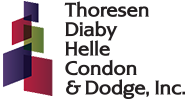 The figures on an income statement report the sales, expenses, and net profit or loss of a business. But these figures can be helpful in another way. They can be used to compute the breakeven point for the business. Knowing your breakeven point can help you run your operations more efficiently and profitably.
The figures on an income statement report the sales, expenses, and net profit or loss of a business. But these figures can be helpful in another way. They can be used to compute the breakeven point for the business. Knowing your breakeven point can help you run your operations more efficiently and profitably.
Simply put, the breakeven point is the sales volume at which the business generates just enough revenue to cover its expenses. While a business that’s breaking even doesn’t have a profit, it’s not losing money either.
- How to determine breakeven. To calculate your breakeven point, you’ll need to know three things: sales, variable costs, and your total fixed costs. Variable costs are those that fluctuate with the number of items sold, such as the cost of materials and sales commissions. Within limits, fixed costs do not fluctuate with sales volume (i.e., rent, insurance, and property taxes).
- Calculating the breakeven point involves two steps. First, it’s necessary to figure out the amount left over from each sales dollar after the variable expenses have been subtracted. This is known as the contribution margin. Then the contribution margin is divided into your fixed expenses to get the breakeven point.
- How to use breakeven. How can you benefit from knowing your breakeven point? First, you’ll be able to manage your business better once you know the sales volume needed to turn a profit. Second, by monitoring your sales, you can accurately predict whether you’re on course to reach your profit goals. Third, you’ll be able to take corrective action more quickly.
There are other benefits too. Using breakeven analysis, you can calculate the sales volume you’ll need to cover the costs of a proposed new product or service. Plus, if you have a desired profit, you can add it to your fixed expenses and calculate the precise sales volume you need to achieve that targeted profit.
Call us if you would like assistance in using breakeven analysis to improve your business.
